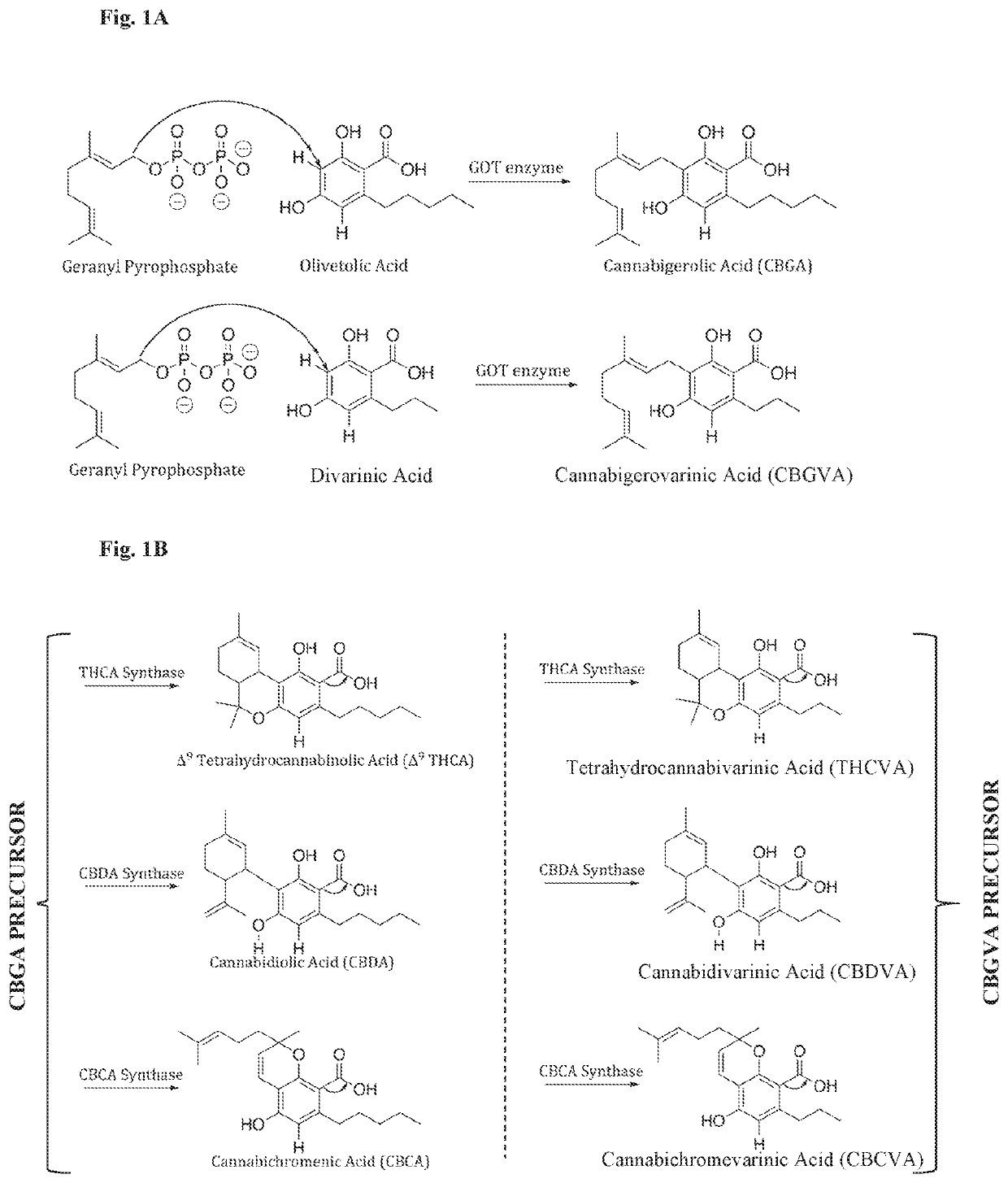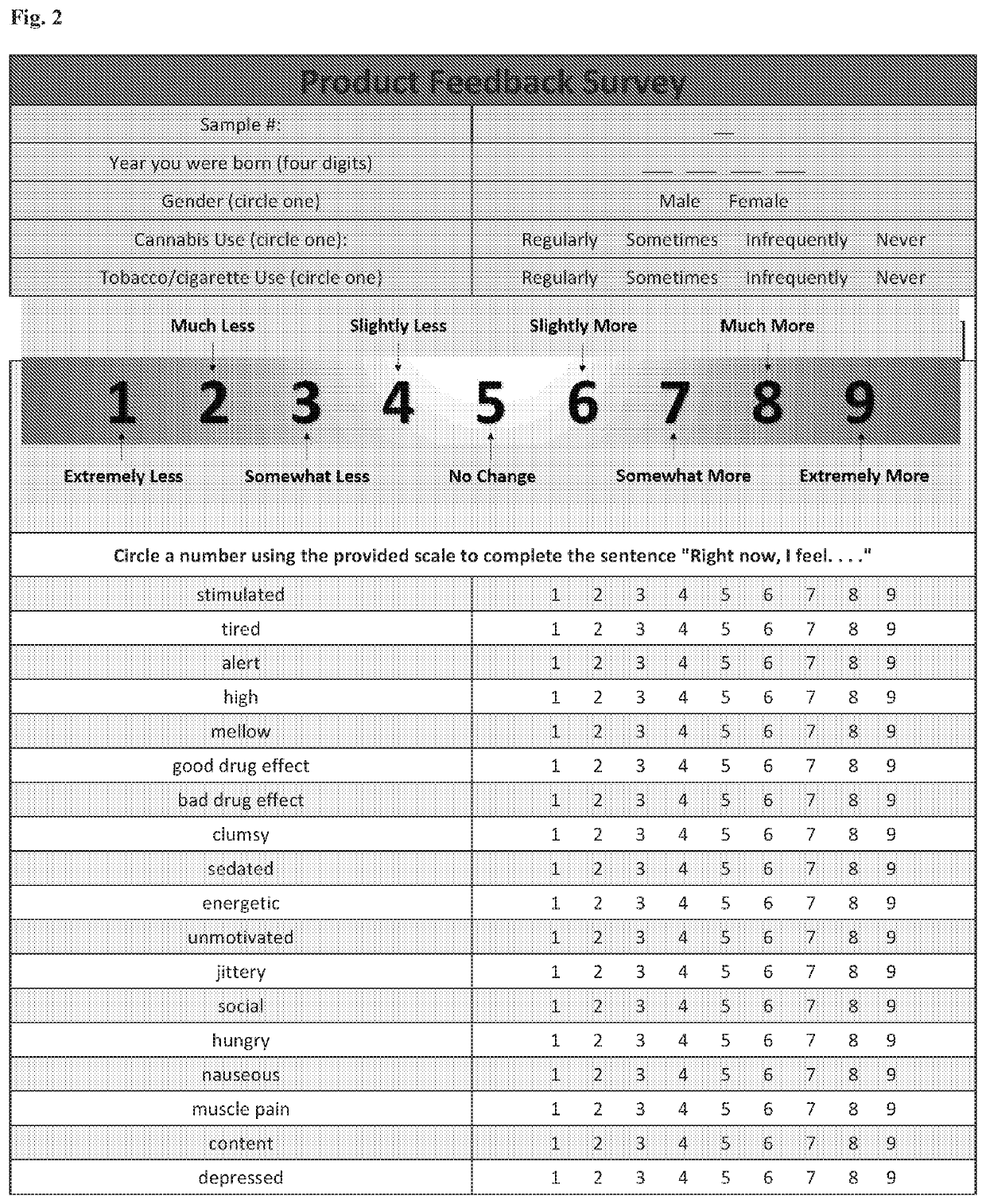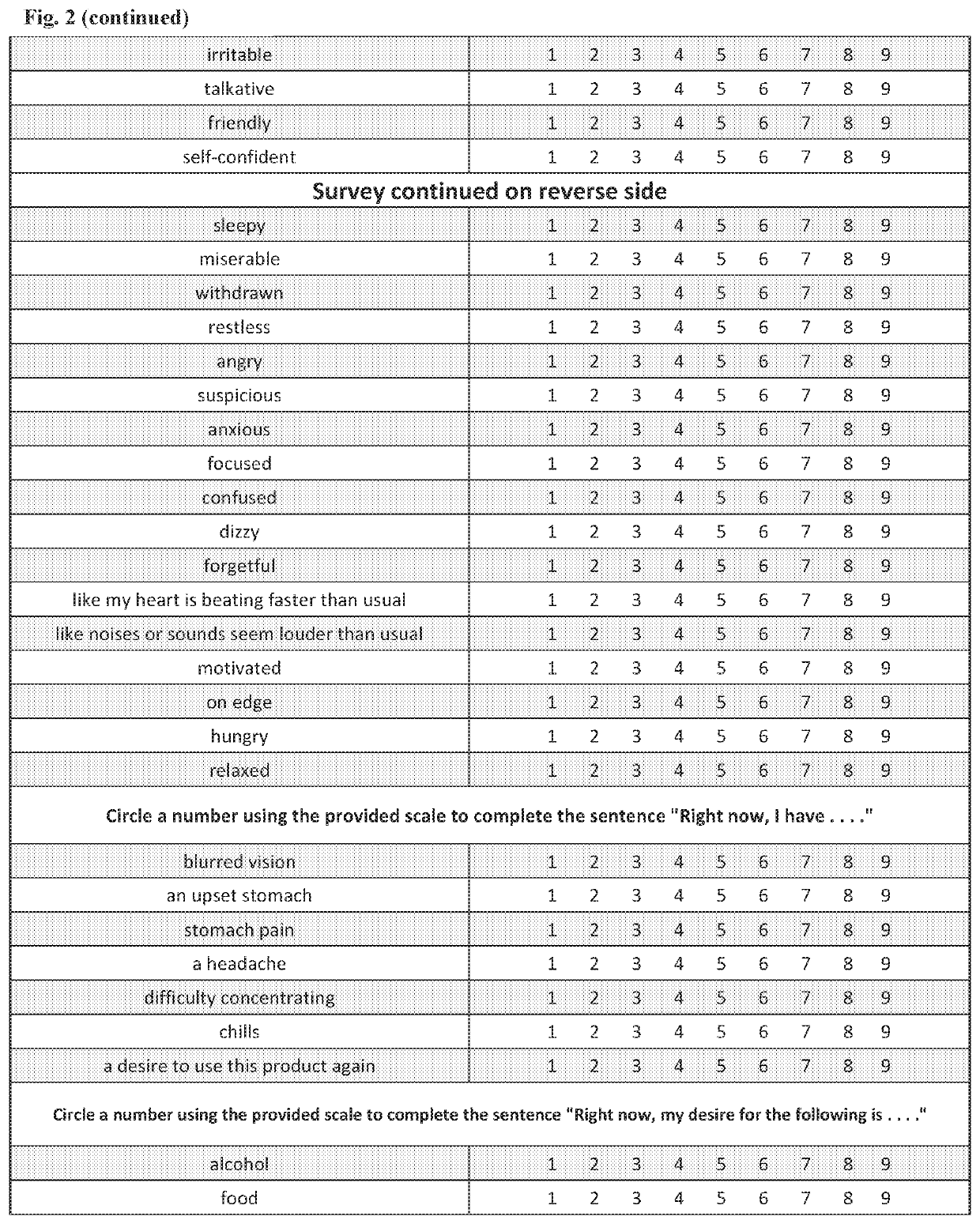High cannabigerol cannabis plants, methods of producing and methods of using them
a cannabis plant and high cannabigerol technology, applied in the field of specialty cannabis plants, can solve the problems of difficult to distinguish varieties, often used incorrectly or interchangeably, and achieve the effect of improving recreational and medicinal effects
- Summary
- Abstract
- Description
- Claims
- Application Information
AI Technical Summary
Benefits of technology
Problems solved by technology
Method used
Image
Examples
example 1
Analysis of Cannabinoids and Terpenes
[0378]Chemical analyses of the parental and progeny Specialty Cannabis varieties of the present disclosure, and of the cannabinoid compositions of the present disclosure, were each carried out using standard chemical separation and detection techniques well known to those skilled in the arts. Qualitative identification of cannabinoids and terpenes was carried out by GCMS, while quantitative analysis was done by GC-FID and / or HPLC-PDA (Photo Diode Array). Initial field analyses of cannabinoids was performed using thin layer chromatography as described in (“Cannabis Inflorescence & Leaf QC” from The American Herbal Pharmacopeia 2013). The in-house assays for cannabinoids included orthogonal methods of GC-FID and HPLC for the highest level of accuracy.
[0379]Plant inflorescence samples were prepared by grinding ˜5 g of dried cannabis flower material in a coffee grinder. From this homogenized material, 1000±20 mg was placed in a 50 mL falcon tube with...
example 3
Trials Using CBG Enhanced Cannabinoid Compositions. (PROPHETIC)
[0401]Volunteer comparison trials will be conducted to further determine the effect of increased CBG content in cannabinoid compositions. Volunteer trials will be conducted in similar fashion to those of Example 2.
[0402]Briefly, each volunteer in the group will be given two composition samples (a control and a comparator blend). The samples will be provided in single-use e-cigarettes or in tinctures or other formulations designed to be vaporized or administered to the mucosa / swallowed, respectively. In this trial, the control comparator blends will be prepared to contain nearly identical levels of a non-CBG cannabinoid (e.g. THC, and / or CBD), but each week the comparator will be formulated so as to include different levels of CBG added (e.g., either 2%, 5%, or 7.5% CBG added in).
[0403]Thirty volunteers will be recruited and asked to fill out surveys inquiring about the experience of smoking each sample. Surveys will also...
example 4
Analysis of CBG Parental Varieties
[0404]One objective of the inventions of the present disclosure was to develop cannabis varieties accumulating non-trace or high levels of CBG and / or CBGV (“CBG / CBGv”), together with non-trace or high levels of non-CBG cannabinoids. This goal was achieved through a multi-pronged cannabis breeding program that utilized existing public and proprietary cannabis lines to produce novel cannabis germplasms exhibiting high levels of CBG / CBGv across varied genetic and phenotypic backgrounds.
[0405]As an initial step, the cannabinoid profiles of each CBG parental variety were determined using HPLC as described in Example 1. The resulting measurements of initial parental lines GRN01, BLK03, ORA03, RED08, SLV09, GLD02, PUR01, and CBD05 are summarized in Table 3.
[0406]All of the initial parental lines exhibited less than 1.65% of total CBG / CBGv max contents, with the majority of parental lines exhibiting less than 1.0% total CBG / CBGv max contents. Parental lines...
PUM
| Property | Measurement | Unit |
|---|---|---|
| heights | aaaaa | aaaaa |
| heights | aaaaa | aaaaa |
| time | aaaaa | aaaaa |
Abstract
Description
Claims
Application Information
 Login to view more
Login to view more - R&D Engineer
- R&D Manager
- IP Professional
- Industry Leading Data Capabilities
- Powerful AI technology
- Patent DNA Extraction
Browse by: Latest US Patents, China's latest patents, Technical Efficacy Thesaurus, Application Domain, Technology Topic.
© 2024 PatSnap. All rights reserved.Legal|Privacy policy|Modern Slavery Act Transparency Statement|Sitemap



